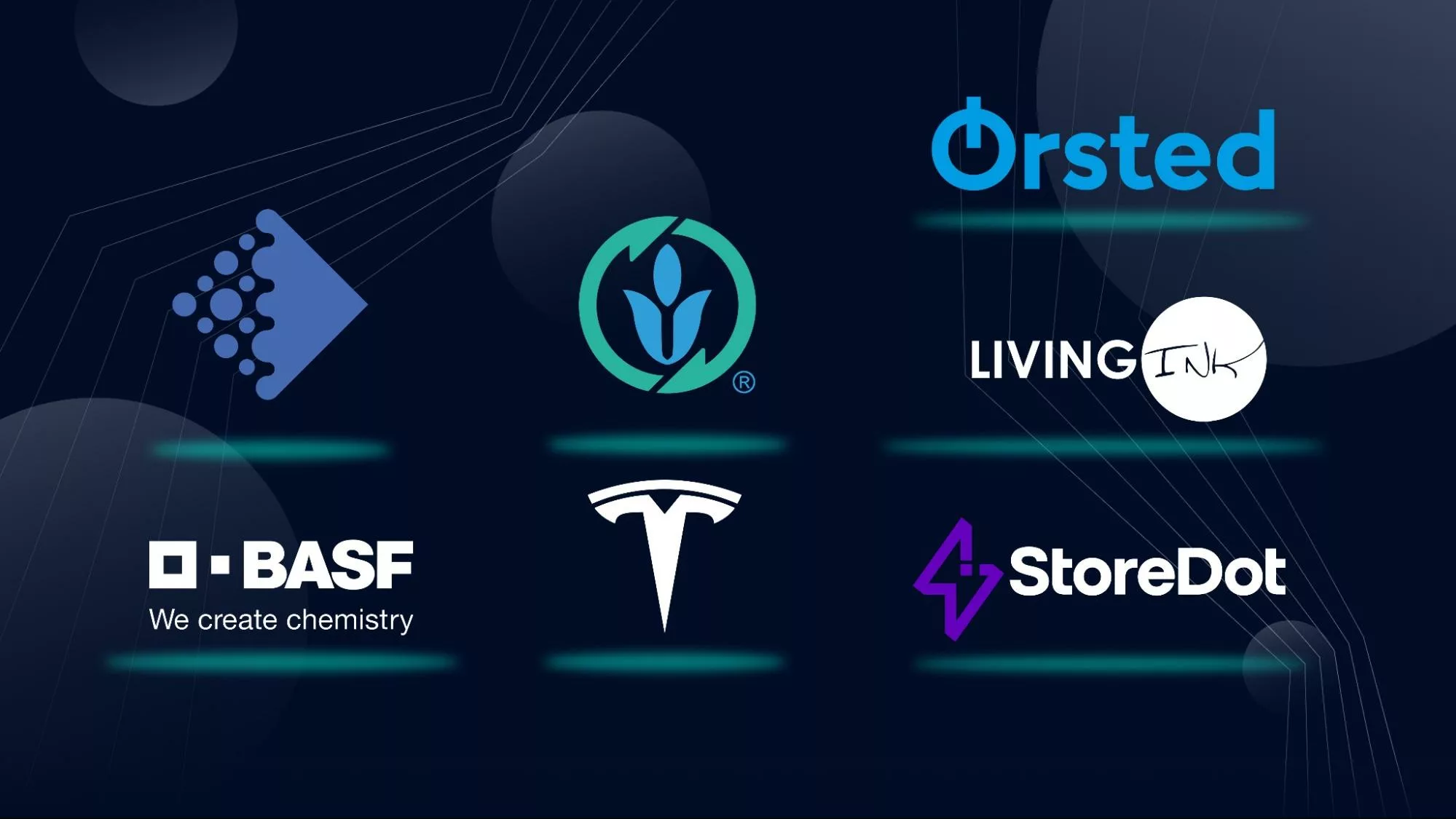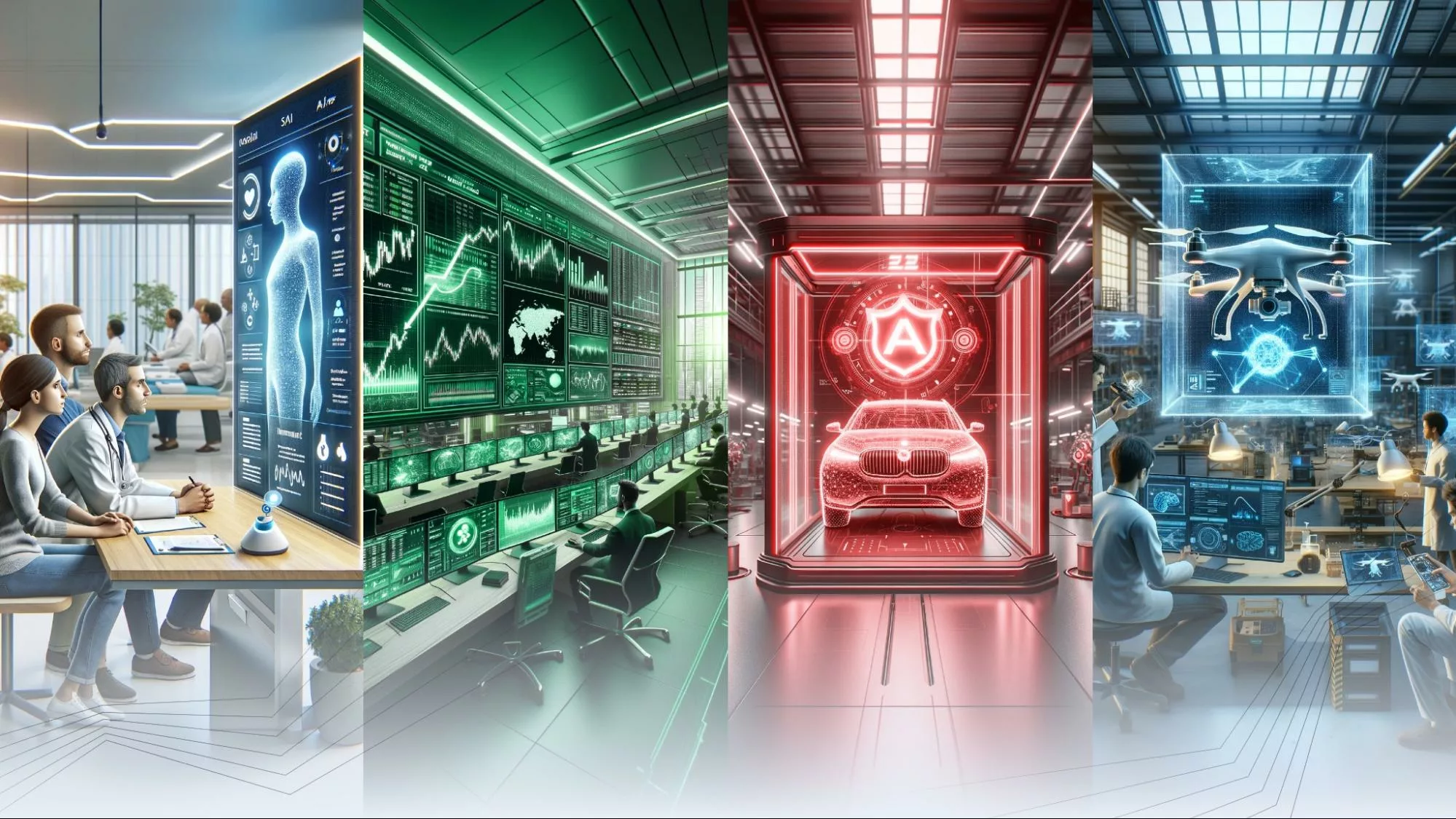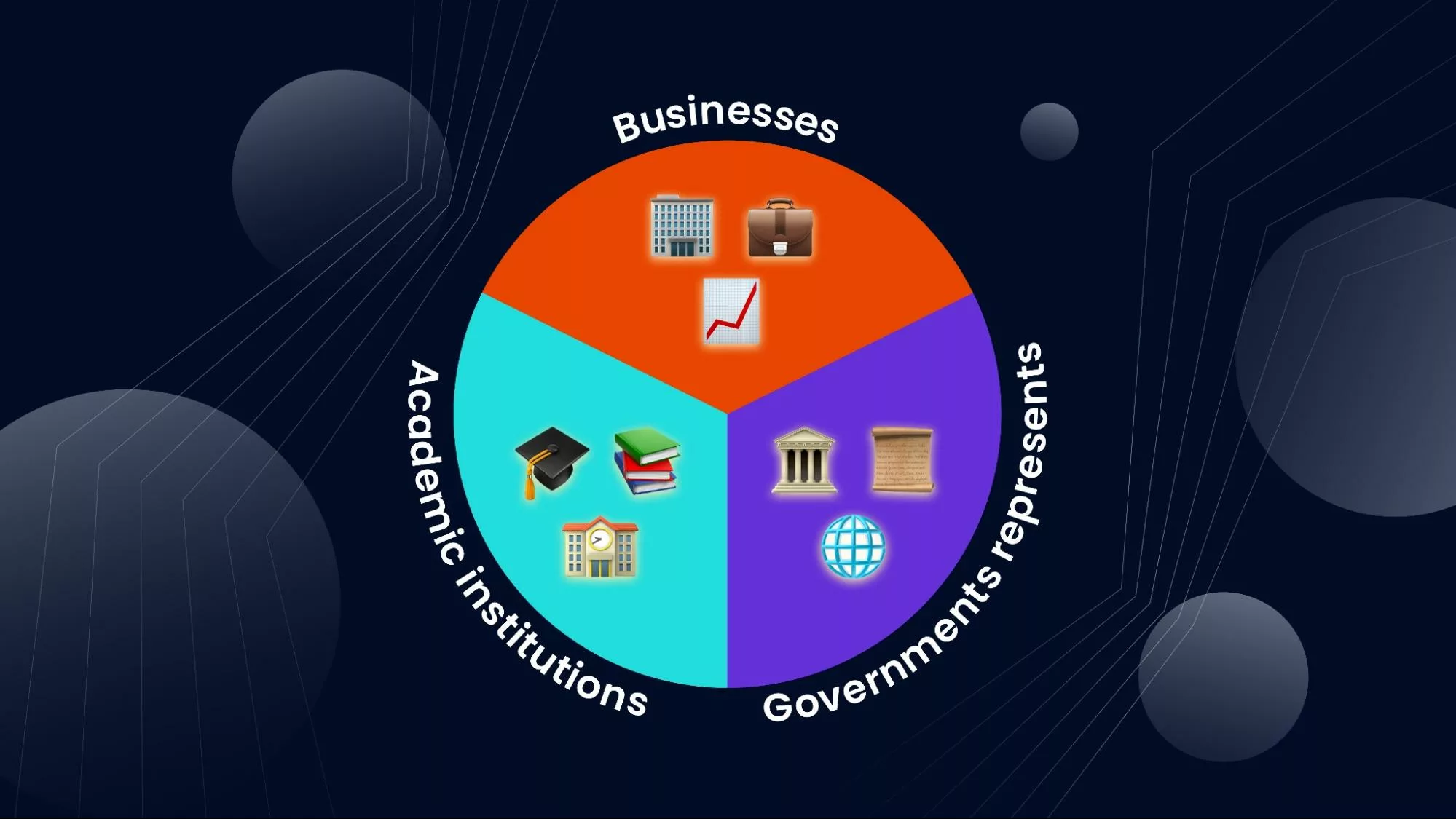
Imagine technology as both a tiny chess piece and the ruler of the board. Big countries are using tech to compete, and new inventions are changing everything – from robots learning to the meaning of life itself! This article explores how tech trends and powerful countries influence each other, shaping our future. We’ll talk about competition, ethics, and how tech might change us forever. Don’t just think new gadgets – think about where the world is headed!
Content:
- How has the environment shaped key trends of R&D in 2024?
- 1. Think global – ecology and sustainability
- 2. AI and ML – engine for progress
- 3. Collaborative R&D and R&D tax credits
- 4. Healthcare and personalized medicine
- 5. Increased R&D investments in emerging markets
- What challenges will R&D face in 2024?
- Summing up
How has the environment shaped key trends of R&D in 2024?
The recent decade has affected the development of the R&D sector a lot, speeding up some of the trends and driving out the others. Societal needs, environmental concerns, and unexpected tensions have formed technological advancements of 2024. As global events unfold and new technologies emerge, R&D priorities will continue to evolve accordingly. What do we have now?
Sustainability and clean energy
Climate change and environmental concerns have driven R&D towards sustainability and clean energy solutions. This includes the development of renewable energy sources, such as solar and wind, advancements in battery storage technology, and innovations in carbon capture and utilization.
Artificial Intelligence and Machine Learning
AI and ML continue to be at the forefront of R&D, with applications expanding into healthcare diagnostics, autonomous vehicles, and intelligent systems for managing complex data. The push for AI ethics and responsible AI also guides research in this area.
Pandemic response and healthcare innovations
The COVID-19 pandemic accelerated R&D in healthcare, particularly in vaccine development, telehealth, and digital health solutions. The urgency of addressing a global health crisis spurred innovations in mRNA vaccine technology and health monitoring devices.
Biotech and genetic engineering innovations, such as CRISPR-Cas9 gene editing, are transforming medical treatments, agriculture, and biofuels. R&D focuses on ethical considerations and potential applications of these technologies.
War-connected developments

The war in Ukraine and a renewed conflict in Gaza have affected shifts in global priorities, funding allocations, and technological focuses.
- Increased focus on defense and security technologies. Current wars have heightened awareness and investment in defense R&D, with an emphasis on cybersecurity, drone technology, and advanced surveillance systems. Countries are prioritizing the development of technologies that can provide strategic advantages in modern warfare and defense.
- Energy security and independence. Given the disruptions in energy supplies, there’s a renewed push towards R&D in renewable energy sources, energy storage solutions, and alternative fuels. This aims to reduce dependency on fossil fuels and ensure energy security.
- Supply chain resilience. The war has exposed vulnerabilities in global supply chains, leading to increased R&D efforts aimed at supply chain diversification, resilience, and the development of local manufacturing capabilities, particularly in critical sectors like semiconductors, pharmaceuticals, and agriculture.
- Humanitarian aid and crisis management. R&D in technologies for humanitarian aid delivery, refugee support, and crisis management has gained attention. This includes innovations in temporary housing, food security, and medical care for displaced populations.
- Cybersecurity enhancements. The conflict’s cyber warfare aspects have underscored the need for advanced cybersecurity R&D. Efforts are focused on protecting critical infrastructure, developing secure communication channels, and enhancing cyber defense capabilities.
- Agricultural innovations. With Ukraine being a significant agricultural producer, the war’s impact on food supplies has spurred R&D in sustainable agriculture, precision farming, and food technology to mitigate global food security risks.
- Collaborative international R&D initiatives. The war has led to increased international collaboration in R&D, especially among countries seeking to support Ukraine and address the broader implications of the conflict. This includes shared research initiatives and funding for technologies critical to defense, energy, and humanitarian efforts.
- Mental health and rehabilitation. The psychological impact of the war has highlighted the need for R&D in mental health services, trauma care, and rehabilitation technologies, aiming to support affected populations.
With reasons and landscape well defined, let’s have a closer look at five key trends in the R&D sector we’re about to witness in 2024 and beyond.
1. Think global – ecology and sustainability

The global push towards sustainability significantly impacts R&D spending, directing investments towards developing solutions that are not only innovative but also environmentally responsible. This shift is driven by increasing environmental awareness, regulatory pressures, and consumer demand for sustainable products and practices. Here are some examples of key areas of focus:
Renewable energy
Investments in R&D for renewable energy sources like solar, wind, and hydroelectric power continue to rise as the world seeks to reduce reliance on fossil fuels. For instance, the International Energy Agency (IEA) reported that global spending on energy R&D has been increasingly focusing on clean energy technologies. Check out some specific examples of R&D developments in renewable energy.
Solar energy
- Company: Oxford PV (UK)
- Development: Perovskite solar cells with efficiencies exceeding 29.5%.
- Investment: £54 million ($72 million) raised in Series D funding round (2023).
- Oxford PV is aiming for commercial production of perovskite solar cells by 2024.
Wind energy
- Company: Ørsted (Denmark)
- Development: Hornsea 3 offshore wind farm in the UK, with a capacity of 2.8 GW.
- Investment: £5.2 billion ($7.1 billion) project cost.
- This project will be one of the largest offshore wind farms globally upon completion.
Biodegradable materials
The development of biodegradable materials, especially in packaging and single-use products, is a major area of R&D. By investing in R&D, the following (and many other) companies are contributing to the development of more sustainable materials, reducing reliance on fossil fuels and minimizing plastic waste pollution.
Bioplastics
- Company: NatureWorks LLC (US)
- Development: Ingeo, a bioplastic made from fermented corn sugar, used in various applications like bottles, packaging, and textiles.
- Investment: $600 million expansion project for Ingeo production (2023).
- NatureWorks is a leading producer of bioplastics with a global reach.
Bio-based composites
- Company: BASF (Germany)
- Development: Infinity, a bio-based polyamide derived from castor oil, used in high-performance applications like sports apparel and footwear.
- Investment: €100 million ($108 million) invested in Infiny production capacity expansion (2021).
- BASF focuses on bio-based alternatives for demanding applications requiring durability and performance.
Algae-based materials
- Company: Living Ink (US)
- Development: Algae-based inks and dyes for printing and textile applications.
- Investment: $4 million seed funding round (2023).
- Living Ink explores the potential of algae for creating sustainable colorants.
Electric vehicles and battery technology
The automotive industry’s shift towards electric vehicles has spurred R&D in battery technology, aiming to improve battery life, efficiency, and sustainability. The development of solid-state batteries and advancements in lithium-ion technology are examples of how R&D is driving innovation in this sector. These are the leading companies in this niche.
Solid-state batteries
- Company: Toyota Motor Corporation (Japan)
- Development: Investing heavily in solid-state battery research with a target of launching an EV equipped with the technology by 2025.
- Investment: Approximately $13.5 billion allocated to battery development by 2030.
- Toyota’s commitment signals its strong belief in the potential of solid-state batteries.
Lithium-ion battery improvements
- Company: Tesla (US)
- Development: Ongoing research on improving battery range, efficiency, and cost through cell design, materials, and manufacturing processes.
- Investment: Approximately $2.5 billion spent on R&D in 2022.
- Tesla’s continuous innovation in battery technology keeps them at the forefront of the industry.
Alternative battery technologies
- Company: StoreDot (Israel)
- Development: Flash batteries with extremely fast charging times (minutes) using nanotechnology.
- Investment: Over $160 million raised in funding rounds.
- StoreDot’s technology, if successful, could revolutionize charging infrastructure and user experience.
And this is just a tiny part of all the green R&D on the planet in 2024. There is also sustainable agriculture, where R&D focuses on developing techniques that increase crop yields without harming the environment. They work on biopesticides, drought-resistant crops, and agricultural practices that improve soil health and biodiversity. There is water purification and conservation, which are critical to addressing global water scarcity. R&D in this area includes the development of low-energy desalination processes, efficient wastewater treatment methods, and smart irrigation systems.
2. AI and ML – engine for progress

Across sectors, AI and ML are automating routine tasks, freeing up human workers to focus on more complex and creative aspects of their jobs. By enabling the analysis of vast datasets and generating insights at unprecedented speeds, they open up new ways for innovation, leading to the development of products and services that were previously unimaginable. They enable businesses to offer highly personalized experiences to customers, from tailored healthcare treatment plans to customized financial advice and personalized shopping experiences.
As AI and ML continue to evolve, their integration into R&D activities is set to deepen. The potential for transformative impacts on healthcare, finance, automotive, and technology sectors is immense, promising to enhance economic growth and address some of the most pressing challenges faced by society.
Here are some ways in which AI and ML help in key economy sectors:
Healthcare
AI algorithms can analyze vast amounts of medical data to identify patterns that humans may overlook, leading to early detection of diseases like cancer. ML models also enable personalized treatment plans based on individual patient data, significantly improving outcomes.
AI speeds up the drug discovery process by predicting how different chemicals will react together, identifying potential candidates for treatments much faster than traditional methods.
Finance
AI and ML are used to monitor transactions in real time, identifying suspicious activities and preventing fraud. This capability is crucial in an era where digital transactions are predominant.
ML algorithms can analyze market data at high speeds to make automated trading decisions based on historical trends and patterns, optimizing strategies in ways humans cannot match.
Automotive
AI is the driving force behind self-driving cars, with ML algorithms processing data from vehicle sensors to make decisions in real time, enhancing safety and efficiency on the roads.
By analyzing data from vehicle sensors, AI can predict when parts might fail or require maintenance, thereby reducing downtime and repair costs.
Technology
AI and ML are revolutionizing software development, from automating code generation to predicting potential bugs and vulnerabilities, thereby streamlining development processes and enhancing software quality.
AI-based systems are capable of detecting and responding to cyber threats more efficiently than traditional software, adapting to new risks in real time, and protecting sensitive data from increasingly sophisticated cyber-attacks.
3. Collaborative R&D and R&D tax credits
The trend toward collaboration among businesses, academic institutions, and governments represents a shift toward open innovation models. This collaborative approach breaks down traditional barriers to innovation, leveraging external ideas, resources, and pathways to market alongside internal efforts. Here are some examples of collaborative development:
- Public-private research consortia. Many countries, including the US or the EU members, have established consortia that bring together companies, universities, and government agencies to work on specific technology challenges, such as renewable energy or advanced manufacturing techniques.
- Open source software. The software industry provides a clear example of how open innovation models, through collaborative projects like Linux or Apache, can lead to robust, widely used technologies.
- Pharmaceutical research. The development of COVID-19 vaccines demonstrated unprecedented levels of cooperation between biotech firms, governments, and academic institutions, leading to the rapid creation and deployment of effective vaccines.

R&D tax credit examples across the countries
Imagine getting a discount on your taxes for creating new things! That’s what R&D tax credits are about. Governments around the world offer these credits to encourage businesses to invest in R&D, which leads to innovation and progress. Let’s see how it works:
- The USA. In the US, businesses can get a 20% discount on their federal income taxes if they spend money on qualified R&D activities. This helps companies like a California biotech company save over $1 million, which they then reinvested in even more research.
- European Union. While each country in the EU has its own approach, they spend the most on R&D tax credits globally. France offers a 30% credit for cutting-edge R&D, while Germany helps out with basic research by giving a 25% discount on taxes.
- Israel. This startup hub is known for its generous R&D tax credits. Companies can deduct all their R&D expenses and get an extra 35% credit on top of that! This attracted big players like self-driving car company Mobileye. It’s a real-life example of how these credits can make a difference.
Overall, by embracing R&D tax credits, businesses can unlock their innovative potential and make the world a better place!
4. Shift towards personalized medicine
Advances in genomics and biotechnology are fundamentally transforming healthcare into a more personalized and effective system. Personalized healthcare tailors medical treatment to individual characteristics and genetic makeup, ensuring treatments are more precise and outcomes are improved. Here’s how these advances are reshaping healthcare solutions and impacting R&D in pharmaceuticals and medical devices:
Personalized healthcare solutions
Genetic testing can identify mutations in an individual’s DNA associated with a higher risk of developing certain diseases, such as cancer, cardiovascular diseases, and genetic disorders. For example, BRCA1 and BRCA2 gene mutation tests can predict the risk of breast and ovarian cancer, allowing for early intervention and tailored preventive measures.
Another field of R&D interest is pharmacogenomics. It studies how genes affect a person’s response to drugs. This knowledge enables healthcare providers to prescribe medications that are more effective and have fewer side effects. A notable example is the use of pharmacogenomics in prescribing the right dosage of warfarin, a blood thinner, to prevent blood clots while minimizing the risk of bleeding.
Advances in genomics have led to the development of targeted therapies, particularly in oncology, where drugs target specific genetic changes in tumors. Trastuzumab (Herceptin) is a targeted therapy used to treat breast cancer that overexpresses the HER2 protein.
Impact on R&D
- Shift in drug development. The pharmaceutical industry focuses on developing targeted therapies that address the genetic causes of diseases rather than just treating symptoms. This shift requires R&D investment in genetic research, biomarker identification, and clinical trials designed to test efficacy in genetically defined patient groups.
- Increased collaboration. Personalized healthcare solutions make closer collaboration between biotech firms, pharmaceutical companies, and technology providers a must. Integrating genetic data with health records and research requires sophisticated data analysis tools, and fostering partnerships with tech companies specializing in AI and big data analytics.
- Regulatory and ethical considerations. The move towards personalized medicine has prompted regulatory bodies to adapt approval processes for drugs and devices that target specific genetic profiles. It also raises ethical concerns about genetic privacy, consent, and access to personalized treatments, influencing R&D priorities and practices.
- Innovations in medical devices. Medical device R&D is also being influenced, with the development of diagnostic tools and wearable technology that monitor health indicators in real time, offering personalized data that can guide treatment decisions.
- Cost and access challenges. While personalized healthcare promises improved outcomes, it also presents challenges in cost and access. R&D in genomics and personalized treatments often involves high research and development expenses, raising questions about the affordability and equitable access to these advanced therapies.
5. Increased R&D investments in emerging markets

In 2021, Israel, South Korea, the USA, Belgium, and Sweden were the top 5 countries investing in their R&D. The global R&D landscape is witnessing a significant shift, though, with emerging economies like China, India, and Brazil playing increasingly pivotal roles. This transformation is largely driven by comprehensive government policies and incentives designed to foster innovation, attract talent, and stimulate economic growth. Here’s an exploration of how these countries influence the global R&D arena and the governmental strategies facilitating this trend:
China
- R&D expenditure: ¥2.81 trillion (USD 419.3 billion) in 2022, according to the OECD Main Science and Technology Indicators
- Government investment. China has made substantial investments in R&D, aiming to become a global leader in innovation. The government’s strategic plans, including “Made in China 2025,” focus on upgrading industries and enhancing capabilities in high-tech sectors.
- Education and talent development. Policies to improve higher education and attract skilled expatriates have bolstered the country’s talent pool, essential for R&D activities.
- Technological advancements. Emphasis on sectors like AI, biotechnology, and renewable energy has positioned China as a frontrunner in these fields, contributing significantly to global R&D efforts.
India
- R&D expenditure: ₹1.51 lakh crore (USD 20.4 billion) in the 2021-2022 fiscal year, according to the Government of India, Annual Report 2022-23, Department of Science and Technology
- Startup ecosystem. India’s government has launched initiatives like “Startup India” to support entrepreneurs through funding, incentives, and simplifying regulations, boosting the country’s innovation ecosystem.
- Public-private partnerships. Collaborations between the government, academic institutions, and the private sector have been crucial in driving R&D, particularly in pharmaceuticals and information technology.
- Focus on education. Investment in technical and higher education, alongside reforms in intellectual property rights, has nurtured a vast pool of research and development engineers and scientists, fueling R&D growth.
Brazil
- R&D expenditure: BRL 155.8 billion (USD 34.1 billion) in 2021 according to the Brazilian Institute of Geography and Statistics
- Sector-specific incentives. Brazil has implemented policies targeting specific sectors, such as agriculture and energy, where it holds competitive advantages, driving innovation in biofuels and agricultural biotechnology.
- Scientific and technological framework. The government has established a legal and regulatory framework to support scientific research and technological development, including financial incentives and tax breaks for R&D activities.
- Collaboration with international partners. By fostering international research partnerships, Brazil has integrated itself into the global R&D network, enhancing its contributions to global innovation.
What challenges will R&D face in 2024?
Even though 2024 will unlikely be an easy year, we hope the craving for development will be stronger than all the difficulties we will face. Albeit, these are three challenges we expect:
- Funding constraints. Securing adequate funding for R&D projects is a significant challenge, especially for startups and smaller enterprises. High costs and uncertain returns can deter investment. Limited funding restricts the scope of research activities, delays project timelines, and can ultimately stifle innovation.
- Regulatory hurdles. Navigating the complex web of regulations and compliance requirements, especially in industries like pharmaceuticals and biotechnology, can be daunting and time-consuming. These regulatory challenges can slow down the development and market introduction of new products, increase costs, and limit the ability of firms to innovate and compete globally.
- Need for skilled professionals. The demand for highly skilled professionals in emerging technologies often outstrips supply, leading to talent shortages in critical areas of research and development. The scarcity of skilled talent can hinder the progress of R&D projects, reduce competitiveness, and drive up salaries, further increasing the costs of innovation.
***
Fortunately, we can help you with the last one! MWDN is a trusted staff augmentation provider for tech companies that need to reinforce their in-house teams with unique specialists. We find, hire, and manage the best experts from Eastern Europe to boost your innovation. Contact us to book a free consultation with a specialist in your field.
Content
- 1 How has the environment shaped key trends of R&D in 2024?
- 2 1. Think global – ecology and sustainability
- 3 2. AI and ML – engine for progress
- 4 3. Collaborative R&D and R&D tax credits
- 5 4. Shift towards personalized medicine
- 6 5. Increased R&D investments in emerging markets
- 7 What challenges will R&D face in 2024?


